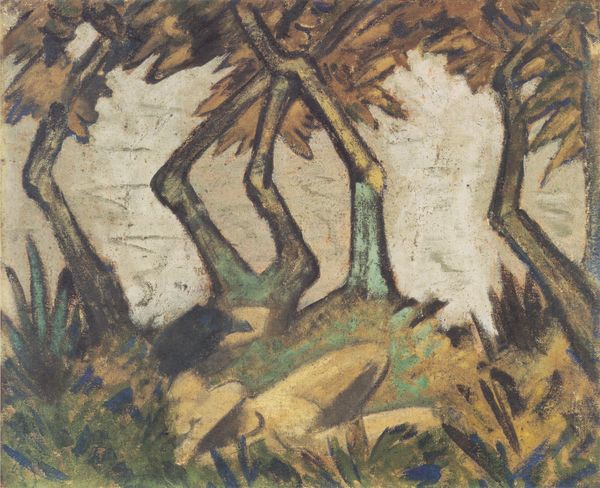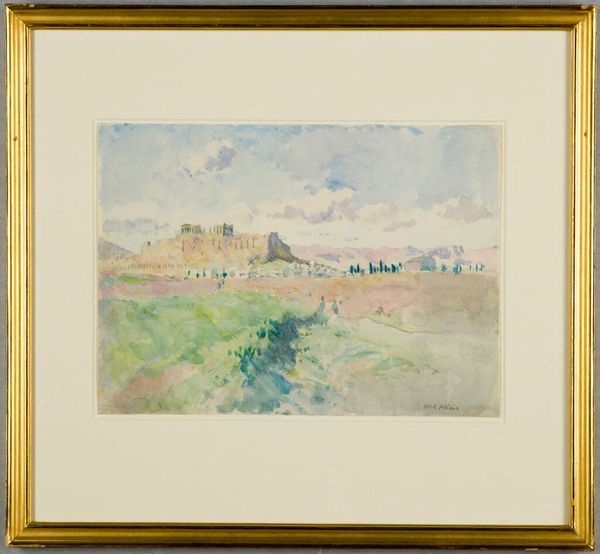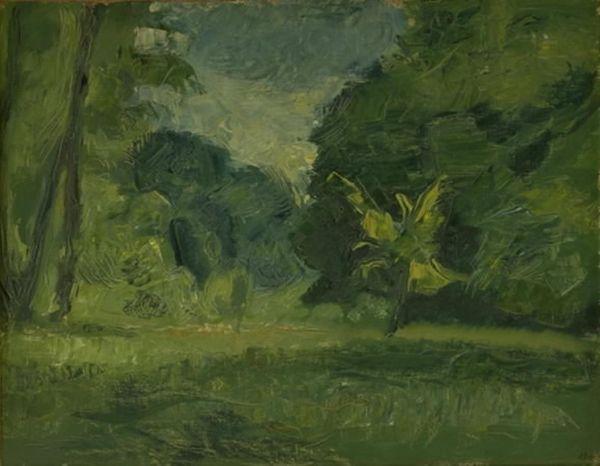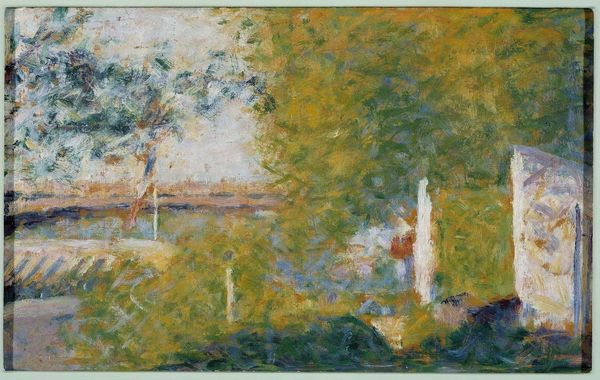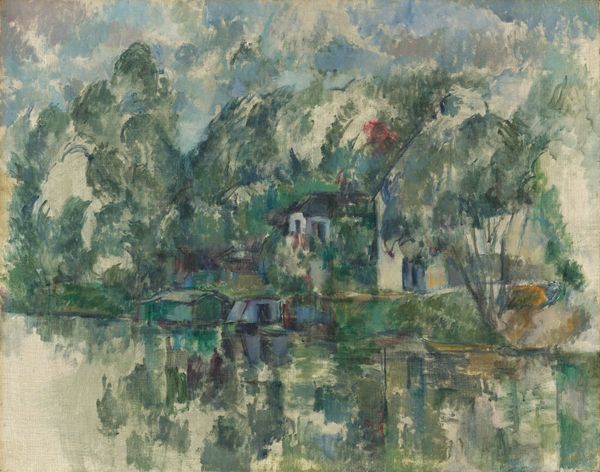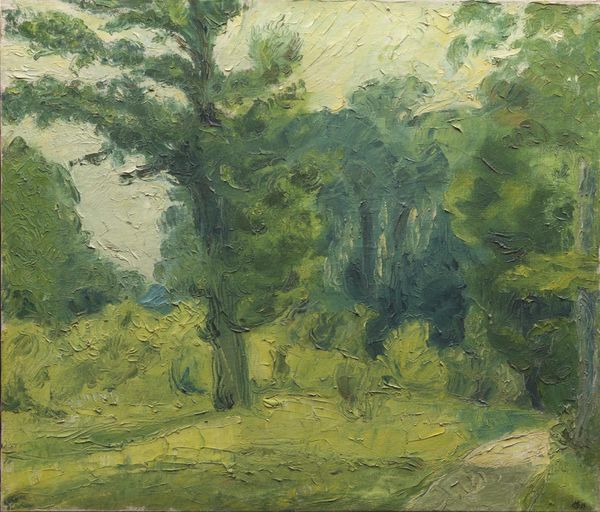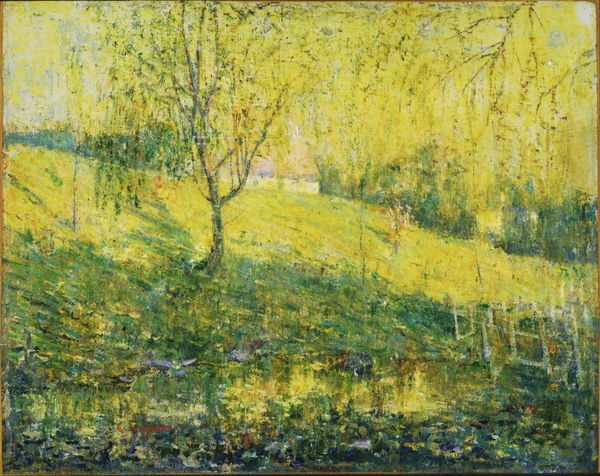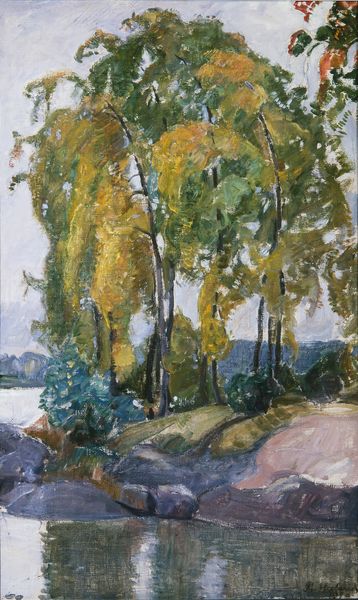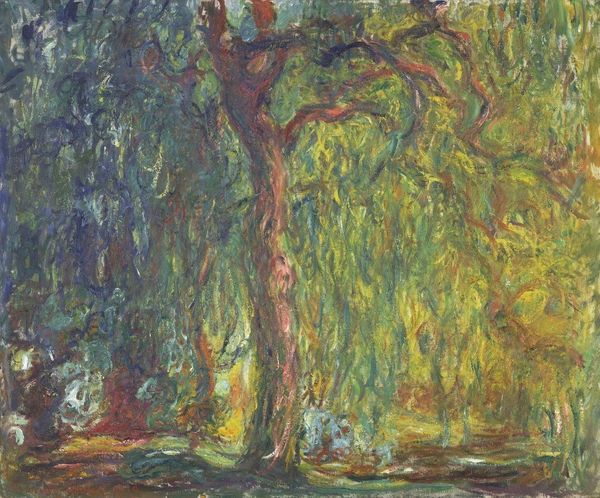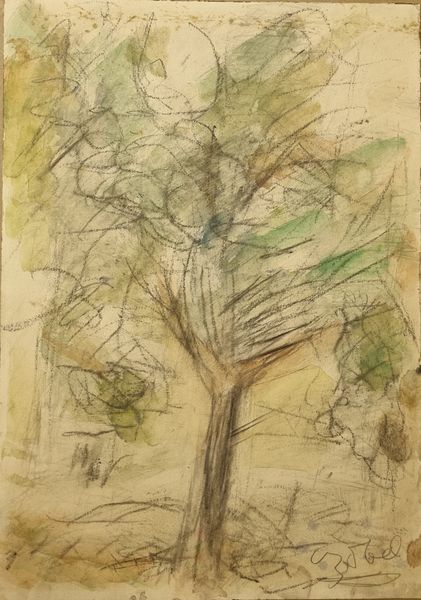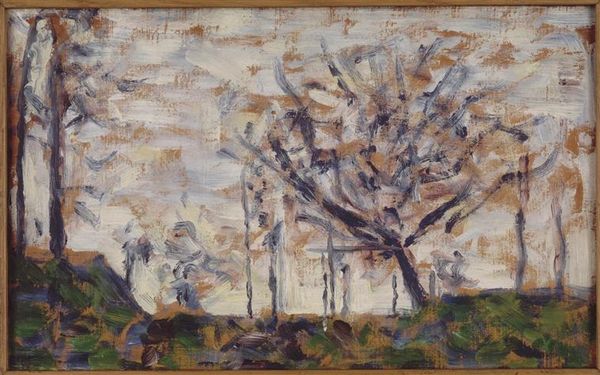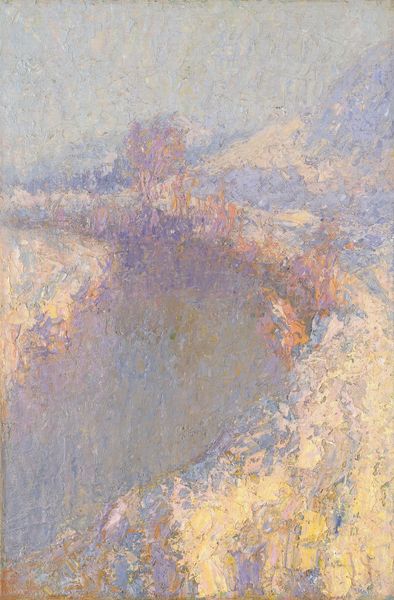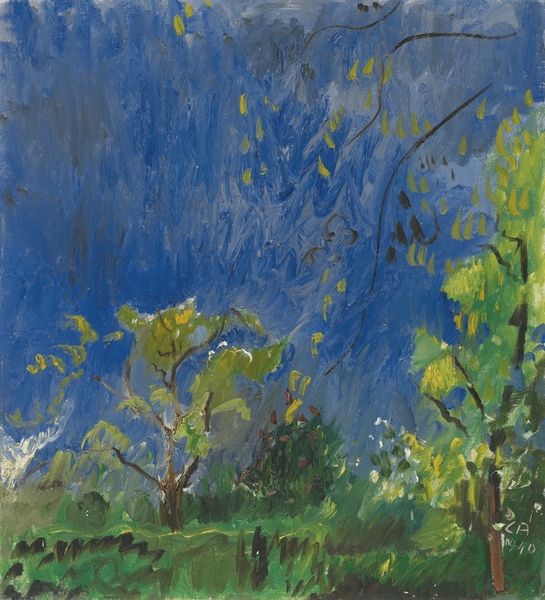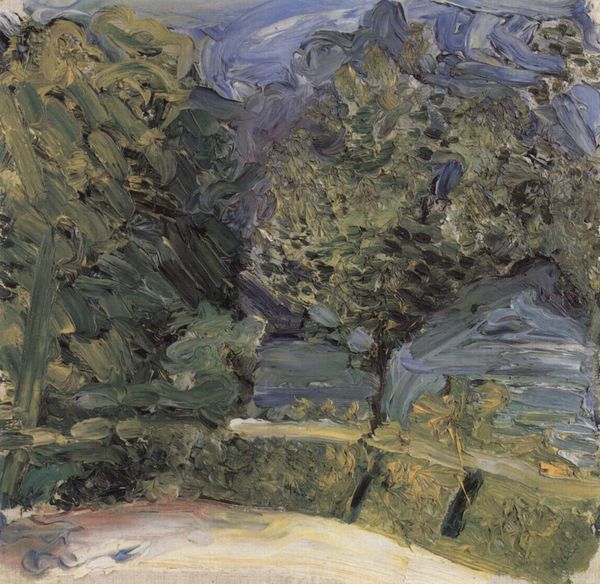
Dimensions: 30 1/4 x 30 1/4 in. (76.84 x 76.84 cm) (canvas)46 1/2 x 46 1/2 x 2 1/2 in. (118.11 x 118.11 x 6.35 cm) (outer frame)
Copyright: Public Domain
John Henry Twachtman’s painting, "The White Bridge", captures a tranquil scene in muted, harmonious tones. The bridge itself, a motif resonating throughout art history, symbolizes transition and connection. Consider the ancient Roman bridges, monumental structures that not only spanned rivers but also facilitated trade and cultural exchange. Or the medieval depictions of bridges as pathways to enlightenment. Twachtman's bridge, however, appears delicate, almost ethereal. This subtle rendition reflects a shift towards personal, subjective experience, indicative of the Impressionist movement. Yet, despite its gentleness, it evokes a deep psychological resonance. Bridges, after all, are not just physical structures; they are metaphors for overcoming divides, for connecting the conscious with the subconscious. This bridge, shrouded in soft light and reflected in the water, becomes a symbol of the introspective journey. The symbol has resurfaced, evolved, and taken on new meanings in different historical contexts.
Comments
minneapolisinstituteofart almost 2 years ago
⋮
During the 1890s, John Henry Twachtman purchased a seventeen-acre farm near Greenwich, Connecticut. He set up his studio there and began to explore the land, seeking new subject matter. The white footbridge depicted here spanned a brook that ran through the property. Twachtman admired Japanese art. Here, the strong diagonal of the brook shows Japanese influence, as does the compressed pictorial space. The visual depth appears shallower than in real life, though we still perceive some objects as closer and others as farther off. The gilded frame, original to the picture, is widely believed to be a design by the celebrated architect Stanford White, of the firm McKim, Mead & White, which designed Mia’s original building.
Join the conversation
Join millions of artists and users on Artera today and experience the ultimate creative platform.
